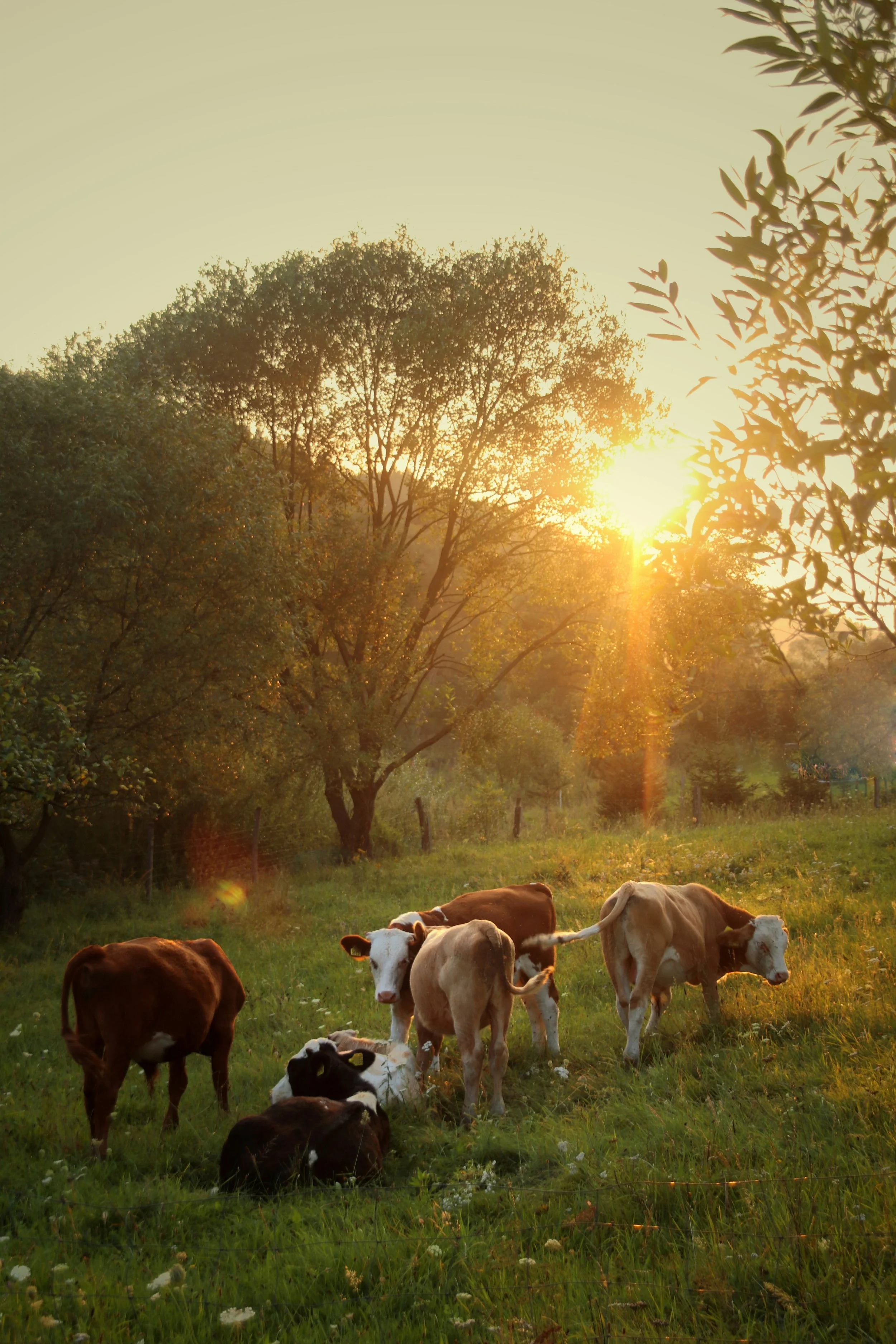The Problem Was Never Meat (It's What We Did to It)
You watched the documentary. Went vegan. Felt amazing for two weeks, then crashed. When you ate meat again? Your body sang.
Humans have eaten meat for 2.5 million years, with our brains evolving specifically because of nutrient-dense animal foods. The health and environmental problems associated with meat come from industrial farming practices, not meat itself. Grass-fed, regenerative farming actually helps sequester carbon and rebuild soil, while industrial farming—including monocrop agriculture for vegan products—depletes it.
Netflix isn't always right
You watched the documentary. Went vegan. Felt amazing for two weeks, then crashed. Your period disappeared. Your hair thinned. Brain fog settled in and wouldn't lift.
But when you ate meat again? Your body sang.
The guilt came later. But the relief came first. Trust that order.
When animals became machines
For millions of years, humans hunted wild animals or raised small herds. Animals ate grass, fertilized soil, died, regenerated the earth. A cycle that fed everyone.
Then industrial systems turned animals into machines. Confined them. Fed them corn and soy their stomachs can't digest. Pumped them with antibiotics to survive conditions that would otherwise kill them.
The Maasai of East Africa still raise cattle the old way—moving across land, letting grass recover, taking only what's needed. Their lands sequester carbon. Industrial operations? Carbon bombs.
Same animal. Completely different relationship.
What you actually need
Importantly, it's not just about protein. You can get protein from plants.
But meat provides zoonutrients—nutrients that only come from animals and that your body needs to survive. B12, heme iron, complete amino acids, DHA, creatine. These exist in bioavailable forms only in animal foods (NIH).
Women especially need heme iron. You bleed every month. That's iron leaving your body. Plant iron absorbs at 2-5%. Heme iron from meat? 15-35% (nutritional research). Your exhaustion, your brain fog, your missing period—might not be "just stress."
Traditional cultures understood this. The Inuit gave pregnant women nutrient-dense organ meats first. The Hadza of Tanzania prize honey and fatty meat above all else. They knew: some things only animals provide.
The other side of vegan
Almond milk requiring billions of bees trucked across countries. Quinoa priced out of reach for Indigenous communities who've grown it for centuries. Soy destroying the Amazon—not for cows, but for processed vegan burgers.
Monocrop agriculture kills everything in its path. Insects. Rodents. Birds. Soil organisms (agricultural studies on field animal deaths). One grass-fed cow feeds you for a year. How many creatures die for your wheat?
Life feeds on life. Done naturally, this process regenerates the earth. But industry destroys any process that should otherwise be whole.
Eating whole
Choose regeneratively raised, grass-fed, local when possible. It costs more upfront. The real cost of industrial meat shows up in healthcare bills and environmental destruction.
Eat the whole animal when you can. Bone broth from bones. Cook with fat instead of seed oils. Organ meats if you're willing. Your ancestors used everything.
Eat less but better. Traditional cultures didn't eat meat three times daily. They ate it ceremonially. Gratefully. Fully.
Trusting what you know
Your craving for meat doesn't make you a bad person. Needing certain nutrients doesn't make you weak or unevolved.
The Dalai Lama eats meat. Indigenous peoples worldwide center it in sacred ceremonies. You're not wrong for trusting what humans have known for millions of years.
The documentary didn't tell you everything. Because like so many other things, it tried to break your body to fix our systems, because shame is easier than transformation.
The problem was never meat. The problem is industrialism—turning the cycle of life into factory production.
When you choose grass-fed over feedlot, local over industrial, whole animal over processed parts—you're choosing the world where animals and land and humans thrive together.
The earth's health and what your body needs aren't opposing forces. They never were.
Industrial systems just made you think they had to be.
What to look for
Grass-fed and grass-finished (both words matter)
Pasture-raised or regeneratively raised
Step 4 or Step 5 rating (look for the number on packaging)
Organic (ensures no antibiotics or growth hormones)
Local farms
What to avoid
"Natural" or "hormone-free" (these labels mean nothing legally)
"Grass-fed" without "grass-finished" (usually grain-finished)
Conventional beef without other labels
Step 1 or Step 2 ratings
No information about how the animal was raised




